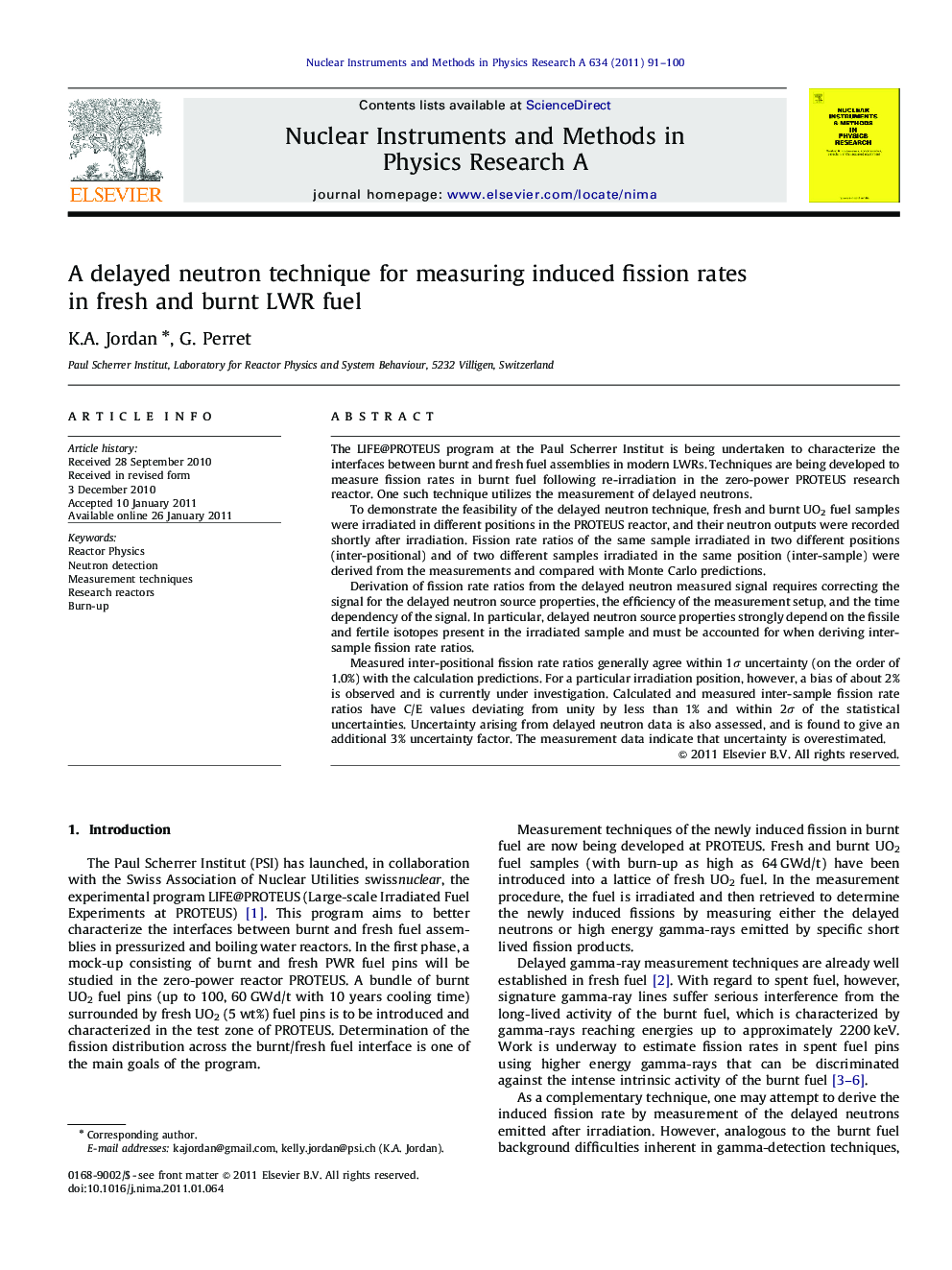| کد مقاله | کد نشریه | سال انتشار | مقاله انگلیسی | نسخه تمام متن |
|---|---|---|---|---|
| 1825956 | 1027372 | 2011 | 10 صفحه PDF | دانلود رایگان |

The LIFE@PROTEUS program at the Paul Scherrer Institut is being undertaken to characterize the interfaces between burnt and fresh fuel assemblies in modern LWRs. Techniques are being developed to measure fission rates in burnt fuel following re-irradiation in the zero-power PROTEUS research reactor. One such technique utilizes the measurement of delayed neutrons.To demonstrate the feasibility of the delayed neutron technique, fresh and burnt UO2 fuel samples were irradiated in different positions in the PROTEUS reactor, and their neutron outputs were recorded shortly after irradiation. Fission rate ratios of the same sample irradiated in two different positions (inter-positional) and of two different samples irradiated in the same position (inter-sample) were derived from the measurements and compared with Monte Carlo predictions.Derivation of fission rate ratios from the delayed neutron measured signal requires correcting the signal for the delayed neutron source properties, the efficiency of the measurement setup, and the time dependency of the signal. In particular, delayed neutron source properties strongly depend on the fissile and fertile isotopes present in the irradiated sample and must be accounted for when deriving inter-sample fission rate ratios.Measured inter-positional fission rate ratios generally agree within 1σ1σ uncertainty (on the order of 1.0%) with the calculation predictions. For a particular irradiation position, however, a bias of about 2% is observed and is currently under investigation. Calculated and measured inter-sample fission rate ratios have C/E values deviating from unity by less than 1% and within 2σ2σ of the statistical uncertainties. Uncertainty arising from delayed neutron data is also assessed, and is found to give an additional 3% uncertainty factor. The measurement data indicate that uncertainty is overestimated.
Journal: Nuclear Instruments and Methods in Physics Research Section A: Accelerators, Spectrometers, Detectors and Associated Equipment - Volume 634, Issue 1, 1 April 2011, Pages 91–100